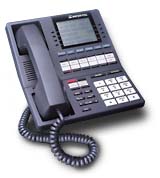| Message-ID: <hysdM.640851$Lfzc.528718@fx36.iad>
Date: 30 May 2023 15:57:03 -0400
From: "Michael Trew" <michael.trew@att.net>
Subject: Re: Congress moves to preserve AM radio in cars
On 5/20/2023 12:18, Garrett Wollman wrote:
> In article<omX9M.808180$PXw7.515043@fx45.iad>,
> Michael Trew<michael.trew@att.net> wrote:
>
>> As Marco said, in many new cars, you can't install an after-market
>> radio. One part of me wants to agree with you, that it's the
>> manufacturer's right to not include an AM radio... but setting that
>> precedent will be the death of broadcast AM.
>
> It's already dead. FM and satellite are not far behind. With 4G and
> 5G wireless there is simply no reason for anyone to still use
> broadcast radio: you can get all the same programming and much, much
> more, streamed to your mobile device which you control using CarPlay
> or Android Auto through the dashboard touch-screen.
>
> And guess what? Your phone gets the same emergency alerts as the radio
> stations do. That excuse simply doesn't hold water any more.
Satellite radio is built into every new car with subscriptions. I know
quite a number of people who use it (anecdotal, I know). Car
manufacturers must have something going with the satellite radio people
– kind of like Microsoft of yore and Internet Explorer. Further, it's
easy to disable emergency alerts on the mobile phones; it's right there
in the settings. Flip phones tend to not have the emergency alerts.
The same can't be said for broadcast radio.
Either way, I'll take your point that it's moot to argue AM radio being
vital to emergency broadcast, in general. I'm probably the oldest 28
year old on the planet, but I enjoy my broadcast radio, and I
particularly enjoy pulling in distant clear-channel stations at night.
You'll regularly find me tuning into 650 AM WSM from Nashville on my 10
PM commute home in Western PA/Eastern Ohio. I'd like to see amplitude
modulation and broadcast radio, in general, to live on.
|
Message-ID:
<SA1PR09MB8937BE043E3E490B614BB654F8489@SA1PR09MB8937.namprd09.prod.outlook.com>
Date: 31 May 2023 02:06:13 +0000
From: "Patton Turner" <address-withheld@invalid.telecom-digest.org>
Subject: RE: Congress moves to preserve AM radio in cars
Three of the links to the Primary Entry Point (PEP) transmitters
(originally ~33 mostly AM stations) were independent from the
internet. There was a dedicated phone line (TDM at the time), a
satellite (which I believe is now IPAWS and/or IPAWS over EMNet- it's
hard to keep that straight), and a XM satellite radio added later
which serves as a parallel distribution chain. One assumes the phone
lines were migrated to MPLS, not internet.
At the PEPs these national level alerts are injected into the
transmitter audio input- there is no requirement for a remote studio
or studio transmitter link (STL) to remain. In fact the original PEPs
had a small console at the transmitter so they could originate
programming if the studio failed. Most PEP transmitters doubled as
fallout shelters. The "fill in PEPs" added post Y2K did not have the
fallout shelters, but I think they retained the consoles. They bult
out CONUS coverage during daytime, and added Guam, American Samoa,
CNMI, and Caribbean coverage.
Some states have the ability to reach their state primaries over
satellite or over fixed microwave, or via dedicated VSAT terminals
(granted these might not be the direct transmission of the national
audio stream). NPR also carries the national level alerts over their
satellite squawk channel, so that represents yet another source of
injection (and over time, so stated migrated their local primaries to
NPR stations since they were two steps closer in the audio chain as
long as their satellite was up.
Non PEPs are certainly vulnerable to a STL failure, and the radio
stations are almost guaranteed to install their ENDECs in the control
room to allow management of required weekly/monthly tests, but the
dead air if a station looses it's STL completely is likely to cause
users to tune in another station.
When Alabama implemented EAS, we had an extremely robust instate
distribution chain, with the EMA being able to inject message into the
two state primaries independent of the PSTN, and over two statewide
broadcast satellite networks (I suspect two so they could carry both
Alabama and Auburn football at the same time), and most stations
monitored their local primary, both satellite networks and NWR. But
no state primary could actually receive a PEP message 24 hours a day,
so it had to be received by a public television station in Mobile (far
SW corner of the state) and sent up a fairly robust microwave system
across the state. This was latter fixed and Alabama got one of the
first "new" PEPs in Birmingham (WJOX-AM).
You may hear (correctly) that stations get their EAS alerts from the
internet- this is the preferred path when it is available to preserve
audio quality and get the complete Common Alerting Protocol (CAP)
message. This doesn't mean this is part of the resilient
distribution. For the lest decade, all stations, at least without a
waver, must have a IPAWS compliant encoder/decoder with a internet
connection, but this doesn't remove their requirement for 2
connections to 2 other sources.
As to the radio stations not passing on the message, it's automatic.
A EAN or NIC message opens a live audio path from the president (EAN)
or FEMA (NIC) to every participating EAS station. There are problems
in the distribution chain, but those PEPs are directly interrupted by
FEMA.
Wow, I was just going to point out that STLs don't matter for the 77
PEPs.
Pat
--
These are my personal opinions.
| Moderator's Note |
|---|
|
I had to revise the threading info of this post. I chose to place it
in the threading after another post which discussed technical
aspects of the alerting structure. If I got it wrong, that's on me.
| | - Bill Horne |
|---|
|
| Message-ID: <20230531130756.GA426798@telecomdigest.us>
Date: 31 May 2023 09:07:56 -0400
From: "Bill Horne" <digest-replies@telecomdigest.net>
Subject: Re: Congress moves to preserve AM radio in cars
On Tue, May 30, 2023 at 03:57:03PM -0400, Michael Trew wrote:
> I'm probably the oldest 28 year old on the planet, but I enjoy my
> broadcast radio, and I particularly enjoy pulling in distant
> clear-channel stations at night. You'll regularly find me tuning
> into 650 AM WSM from Nashville on my 10 PM commute home in Western
> PA/Eastern Ohio. I'd like to see amplitude modulation and broadcast
> radio, in general, to live on.
In 1978 and 1979, I worked at radio stations in Santa Barbara,
California, while I attended college there. The first station I worked
at had purchased a Volkswagon "Thing" automobile from a soldier who
brought it home from Germany. It had an AM radio that tuned the
European broadcast band, around 200 KHz, and every week, I would drive
it up to the top of the Los Padres forest to check the station's
transmitter.
I could here Deutsche Welle all the way up and all the way back down,
all during the ride, on about 200 KHz, which is the low end of the
band where aircraft marker beacons operate in the U.S. IIRC, I could
even hear the marker beacon at the Santa Barbara airport.
I was the happiest 26 year old in the world. I even learned a few
words of German!
Bill
|



